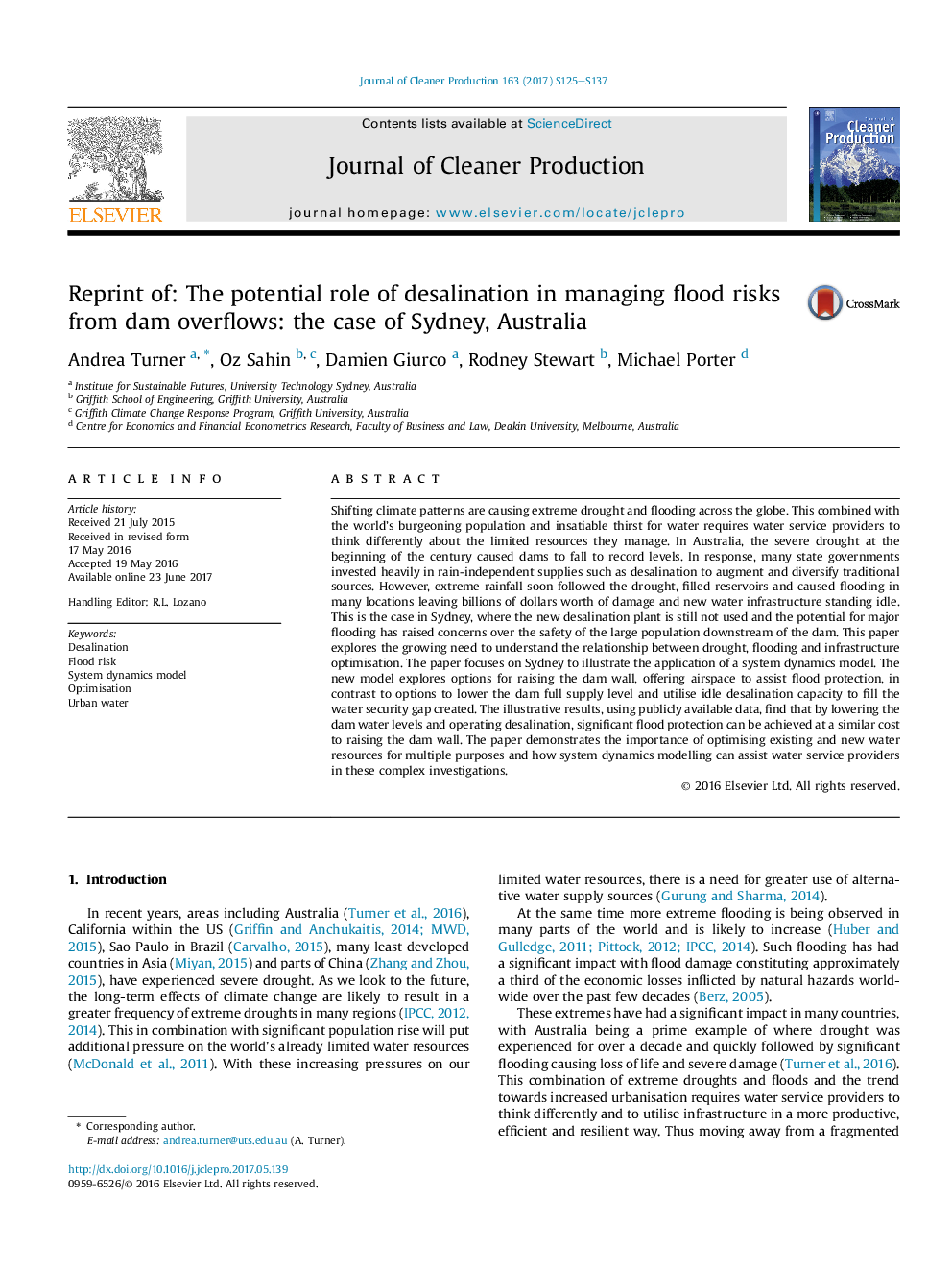| کد مقاله | کد نشریه | سال انتشار | مقاله انگلیسی | نسخه تمام متن |
|---|---|---|---|---|
| 5480530 | 1399317 | 2017 | 13 صفحه PDF | دانلود رایگان |
- Sydney dam must be raised or water level lowered to reduce the risk of flooding.
- Raising the wall will be costly but lowering the water level will reduce security.
- Idle desalination can fill the water security gap created at a low marginal cost.
- Existing and new infrastructure now need to be used for multiple purposes.
- System dynamics models can help in these complex optimisation investigations.
Shifting climate patterns are causing extreme drought and flooding across the globe. This combined with the world's burgeoning population and insatiable thirst for water requires water service providers to think differently about the limited resources they manage. In Australia, the severe drought at the beginning of the century caused dams to fall to record levels. In response, many state governments invested heavily in rain-independent supplies such as desalination to augment and diversify traditional sources. However, extreme rainfall soon followed the drought, filled reservoirs and caused flooding in many locations leaving billions of dollars worth of damage and new water infrastructure standing idle. This is the case in Sydney, where the new desalination plant is still not used and the potential for major flooding has raised concerns over the safety of the large population downstream of the dam. This paper explores the growing need to understand the relationship between drought, flooding and infrastructure optimisation. The paper focuses on Sydney to illustrate the application of a system dynamics model. The new model explores options for raising the dam wall, offering airspace to assist flood protection, in contrast to options to lower the dam full supply level and utilise idle desalination capacity to fill the water security gap created. The illustrative results, using publicly available data, find that by lowering the dam water levels and operating desalination, significant flood protection can be achieved at a similar cost to raising the dam wall. The paper demonstrates the importance of optimising existing and new water resources for multiple purposes and how system dynamics modelling can assist water service providers in these complex investigations.
Journal: Journal of Cleaner Production - Volume 163, Supplement, 1 October 2017, Pages S125-S137
